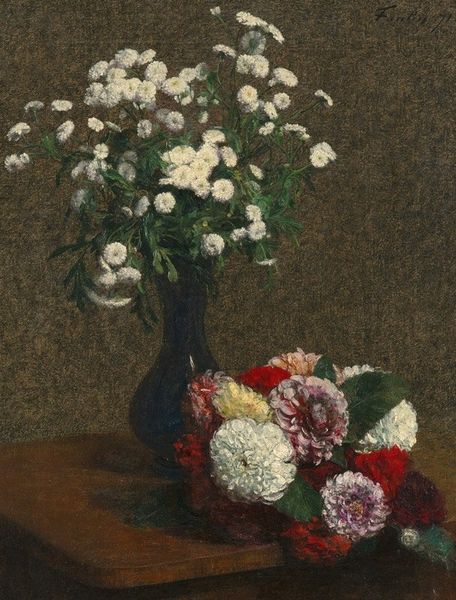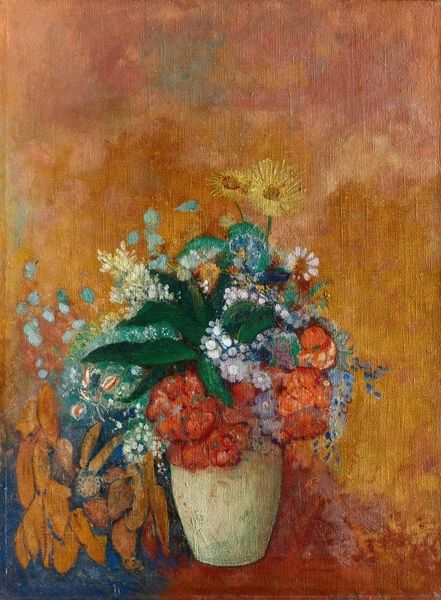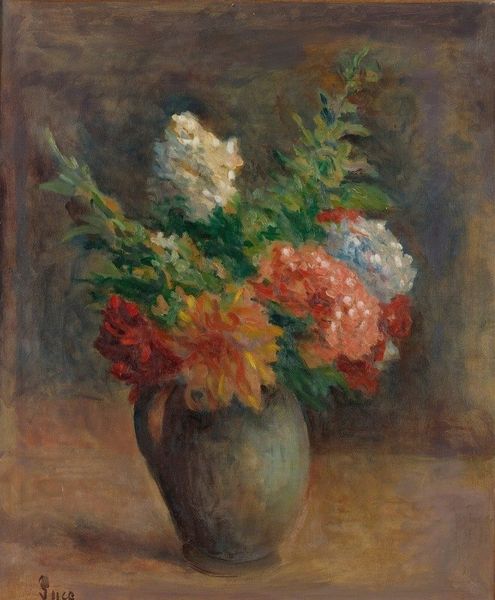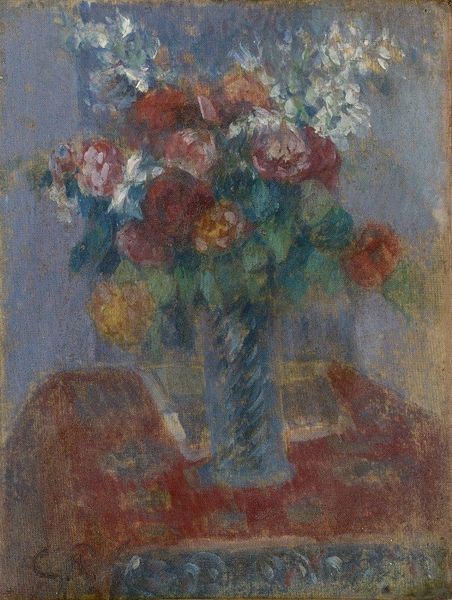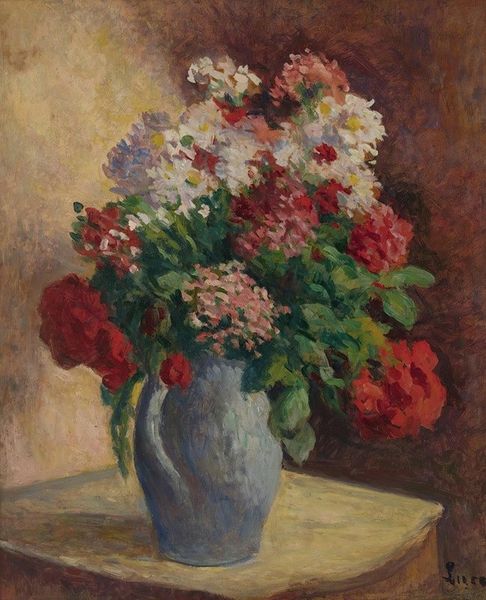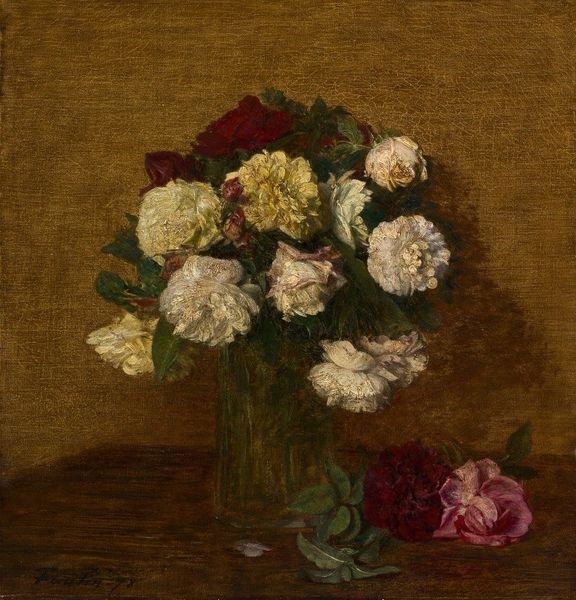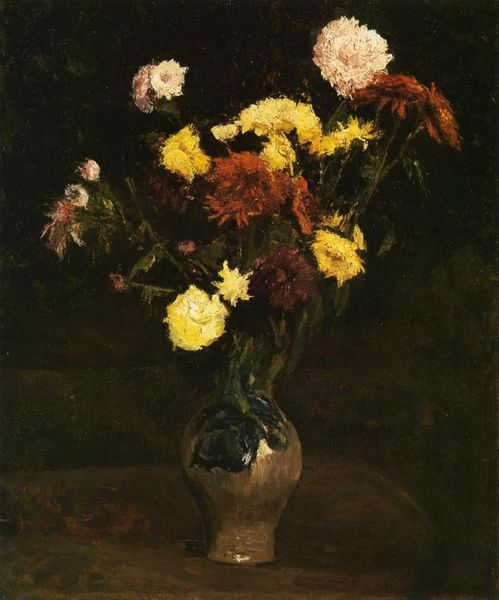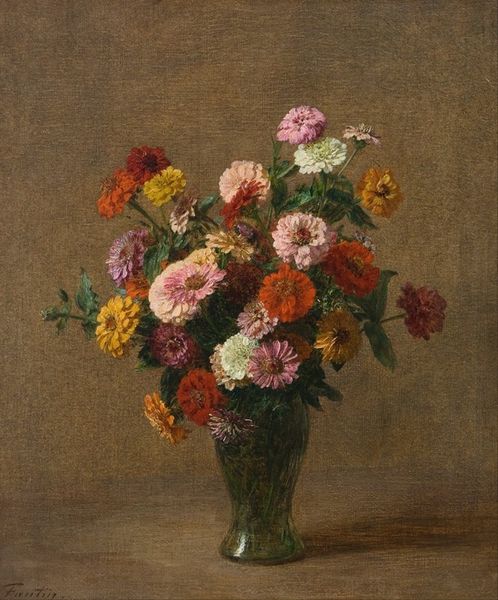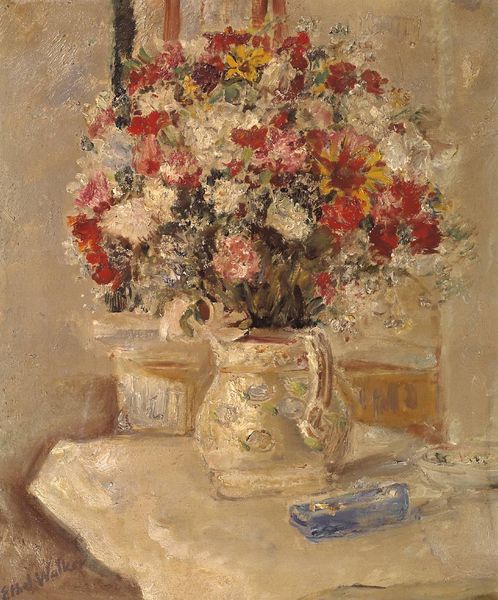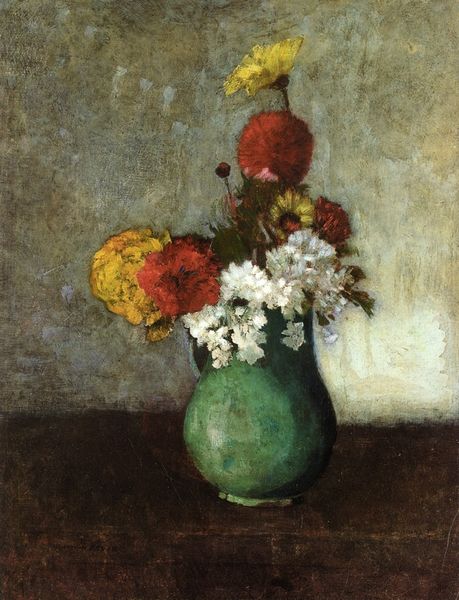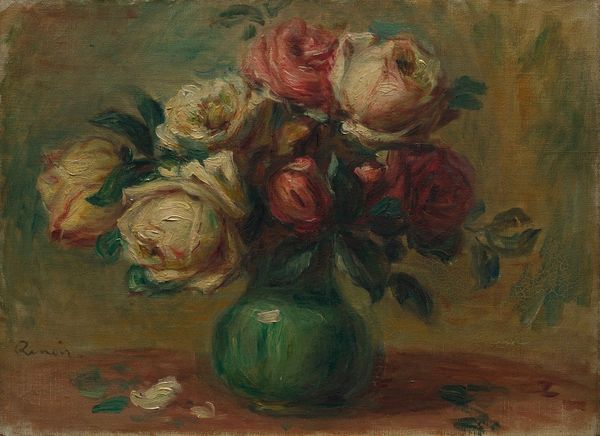
painting, oil-paint, impasto
#
dutch-golden-age
#
painting
#
oil-paint
#
oil painting
#
impasto
#
post-impressionism
Copyright: Public Domain: Artvee
Curator: Welcome. We're standing before Vincent van Gogh's "Vase with Chinese Asters and Gladioli," painted in 1886. Note the distinctive impasto technique and the use of oil paint—characteristic elements of the post-impressionist movement he helped define. Editor: Whoa. Immediately, I feel the weight, like thick clotted cream, dark but bursting with fading vitality, wouldn’t you say? The reddish-brown background seems to close in...it's a very intense viewing experience. Curator: Absolutely, there’s definitely an expressive urgency in the brushstrokes, and how it resonates can indeed be overwhelming. You can't miss the interplay of light and shadow, emphasizing the textured surface. Van Gogh's use of complementary colors—notice the interplay of reds and greens—further enlivens the composition, too. What do you think is he conveying in terms of that balance? Editor: Maybe a hint of that famous Van Gogh darkness? I see beauty struggling against… something. I also can’t get over this earthy vase; it appears quite unpretentious. The choice feels intentional given how lavish are the flowers on display in their last flush. They’re both together, aren’t they: high and low culture on view? Curator: An interesting interpretation, especially within the context of 19th-century salon painting and its focus on portraying a refined life through flower painting traditions. It prompts us to wonder whether he saw that high culture crumbling—the dark background suggesting the historical gloom settling over it. Van Gogh would be showing through such still life work that new sensibilities should exist in the artist community? Editor: It’s less ‘boudoir bouquet’ and more ‘earth’s last gasp of color’ for me. The Chinese asters look like exploding fireworks and the gladioli seem poised to topple. Curator: Precisely, which raises questions of his engagement with Japanese prints he likely collected in Paris, when thinking of that ‘exploding fireworks' imagery you are discussing. Do the colors have anything to suggest further cultural implications to you, even in relation to Japanese culture? Editor: Not quite—the yellow strikes me. A strange yellow. All is in tension but this image. A single glint that the artist, for once, is taking it slow. Curator: Thank you. By examining works like these, and others during this period, one can see just how he contributed towards dismantling that older framework to offer something raw and intimate in its place. Editor: Indeed. I'll definitely remember that dance of darkness and fleeting light. There's beauty there, if we just pause for it.
Comments
No comments
Be the first to comment and join the conversation on the ultimate creative platform.
